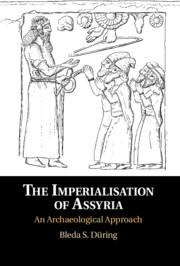Book contents
- The Imperialisation of Assyria
- The Imperialisation of Assyria
- Copyright page
- Dedication
- Contents
- Figures
- Tables
- Acknowledgements
- A Note on Chronology
- Introduction
- One A Fragmented World
- Two A City at the Fringe?
- Three The Rise of Assyria
- Four A Patchwork Empire
- Five Practising Empire
- Six Rulers of All the World
- Conclusions
- Bibliography
- Index
Introduction
Published online by Cambridge University Press: 24 January 2020
- The Imperialisation of Assyria
- The Imperialisation of Assyria
- Copyright page
- Dedication
- Contents
- Figures
- Tables
- Acknowledgements
- A Note on Chronology
- Introduction
- One A Fragmented World
- Two A City at the Fringe?
- Three The Rise of Assyria
- Four A Patchwork Empire
- Five Practising Empire
- Six Rulers of All the World
- Conclusions
- Bibliography
- Index
Summary
This study deals with one of the most remarkable developments in the history of the Ancient Near East, which had significant impacts on the long-term development of Eurasia. This development consists of the rise of sustainable forms of empire and imperialism. The emergence of durable empires resulted in a total transformation of interregional power dynamics of the ancient world. These imperial infrastructures eventually gave rise to the global order of the modern world, in which the actions of a few powerful governments have repercussions across the globe. While it would be naive to argue for a direct evolution of imperial traditions from Assyria to the modern world, I will argue that imperial repertoires were transmitted and reworked from one empire to the next, and that imperialism in the modern world has its roots in the deep past.
- Type
- Chapter
- Information
- The Imperialisation of AssyriaAn Archaeological Approach, pp. 1 - 4Publisher: Cambridge University PressPrint publication year: 2020

